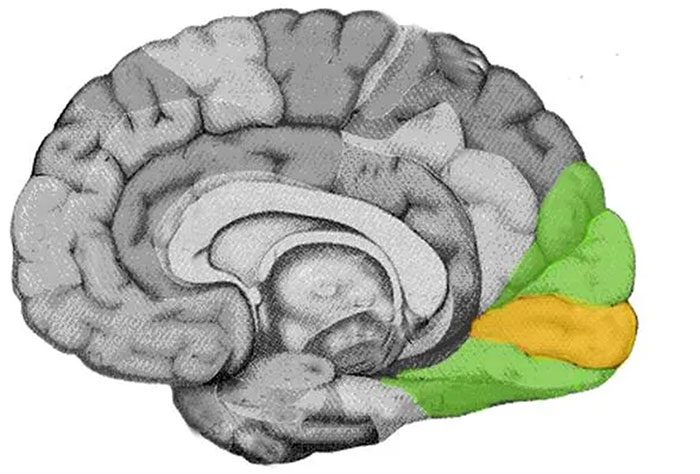Imagining and visualizing in thought is a powerful ability that brings many benefits. This ability arises from a combination of innate talent and real-life experiences.
Imagine a soccer match that ends in a tie, with both teams preparing for a penalty shootout. The crowd is cheering excitedly, and your teammates are looking to you to bring victory to the team. In this situation, can you visualize what will happen through specific details and imagery?

Some people can accurately visualize events and objects, while others cannot (Image: Getty Images).
Scientists are striving to understand why some individuals can easily visualize scenarios in their minds, while others struggle. Even within a single person, this ability can vary from moment to moment.
The Brain and Imagery Construction
Imagery construction is the ability to envision objects and situations in the mind without relying on actual input data.
For example, when you think of a close friend, their face immediately appears in your mind without needing to see them in front of you. When dreaming of an upcoming vacation, you can picture yourself on a beautiful beach.
A soccer player preparing to take a penalty kick might visualize themselves like they’re watching a video or even smell the grass or hear the cheers of the crowd.

The visual cortex affects both real and imagined imagery construction (Image: Coxer/Wiki).
Scientists believe that the primary visual cortex, located at the back of the brain, is involved in imagery construction. This part of the brain processes visual information received from the eyes.
Another area of the brain, located just in front of the forehead, also contributes to imagery construction. This is the prefrontal cortex, responsible for executive functions, which are high-level mental skills that allow you to focus, plan, organize, and reason. These skills are somewhat related to each person’s ability to construct imagery.

The prefrontal cortex controls executive functions (Image: National Institute of Mental Health/Wiki).
Experience and Memory
Most brain regions operate similarly whether you are directly experiencing something or visualizing it in your mind.
For instance, when you directly see a beautiful scene, your brain creates a memory of that image; however, this memory is not simply stored in one place in the brain; it is generated through the interaction of thousands of brain cells working together.
Later, when a sound, smell, or image reminds you of that beautiful scene, the network of brain cells is activated, allowing you to vividly recall the scene as if you were actually standing there.
Benefits of Imagery Construction
The ability to visualize in your mind is very beneficial. Look at the face of a gymnast to see their focus before a routine. It seems that this athlete is envisioning themselves executing a perfect move during practice.
Each time they practice, the brain regions being used during visualization, especially before stepping into a competition, are activated, helping them gain confidence and prepare their brains to replicate previous successes.

Imagery construction can help athletes perform difficult moves (Image: Koki Nagahama/Getty Images).
Athletes can use their visualization skills to help them develop skills more quickly and with less effort. Engineers and technicians can employ this ability to repair and design objects. Visualization in the brain can also help patients recover their physical movement skills more swiftly after brain injuries.
Innate Interaction – Experience
If you find it difficult to visualize in your mind, it’s not a problem. This ability is the result of a combination of brain function and real-life experiences.
For example, taxi drivers need to navigate complex streets, and over time, their experiences affect changes in their brain structure. Specifically, their hippocampus enlarges. This area of the brain is related to memory.
Scientists believe that training exercises involving map visualization help them improve their visualization skills, affecting the hippocampus, which in turn enhances their navigation abilities.
Moreover, observing others perform a physical activity also stimulates brain regions similar to those activated when you create mental imagery.
If you want to be able to do something, watching videos of others doing it can have the same effect as visualizing yourself doing it. Therefore, even if you lack the innate ability to construct images in your mind, there are many ways to improve this skill.


















































